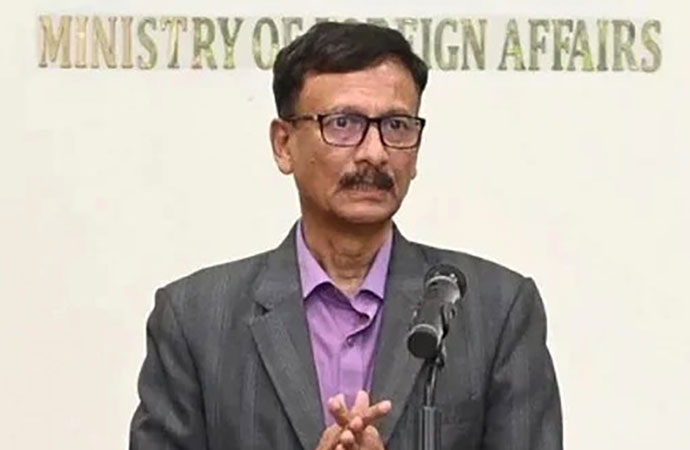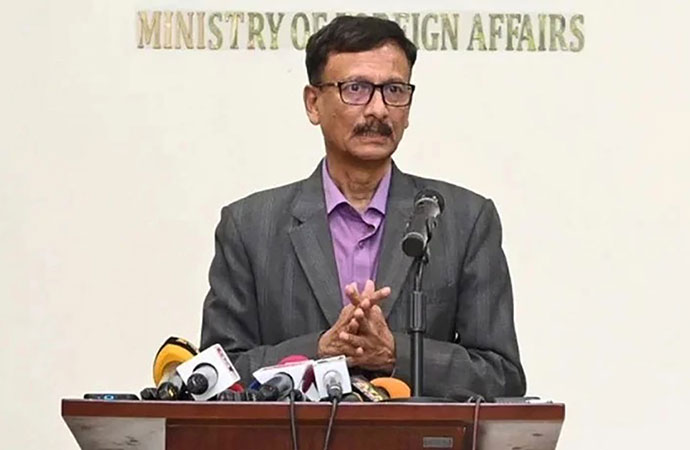World this week

Photo: AP/UNB
The United States and 12 allies issued what amounted to a final warning to the Houthi rebel group Ansarallah to cease their attacks on vessels in the Red Sea or face potential targeted military action. The Yemen-based militants have carried out at least 23 attacks in response to the Israel-Hamas war in Gaza since Dec. 19. A senior Biden administration official declined to detail rules of possible engagement if the attacks continue, but underscored that the Iranian-backed Houthis should "not anticipate another warning" from the U.S. and its allies.
The statement was signed by the United States, Australia, Bahrain, Belgium, Canada, Denmark, Germany, Italy, Japan, Netherlands, New Zealand, Singapore and the United Kingdom. Separately, the U.S. called on the United Nations Security Council on Wednesday to take action against the Houthis and warned their financier Iran that it has a choice to make about continuing to provide support to the rebels. Ansarallah say their attacks aim to end the Israeli air-and-ground offensive in Gaza.
Two bombs exploded and killed at least 84 people at a commemoration for a prominent Iranian general slain by the U.S. in a 2020 drone strike, Iranian officials said, as the Middle East remains on edge over Israel's war with Hamas in Gaza. No one immediately claimed responsibility for what appeared to be the deadliest militant attack to target Iran since its 1979 Islamic Revolution. Iran's leaders vowed to punish those responsible for the blasts, which wounded at least 284 people.
The explosions struck minutes apart on Wednesday (Jan. 3), shaking the city of Kerman, about 820 kilometres (510 miles) southeast of the capital, Tehran. The second blast sprayed shrapnel into a screaming crowd fleeing the first explosion. An earlier death toll of 103 was twice revised lower after officials realised that some names had been repeated on a list of victims and due to the severity of wounds suffered by some of the dead, health authorities said.
A series of powerful earthquakes hit western Japan on New Year's day, killing at least 84 people with the death toll expected to rise as rescue workers fought to save those feared trapped under the rubble of collapsed buildings. Aftershocks continued to shake Ishikawa prefecture and nearby areas two days after a magnitude 7.6 quake slammed the region, with the epicentre in Noto, about 300 kilometres (185 miles) from Tokyo on the opposite coast. Water, power and cell phone service were still down in some areas.
Japanese media's aerial footage showed widespread damage in the hardest-hit spots, with landslides burying roads, boats tossed in the waters and a fire that had turned an entire section of Wajima city to ashes. Authorities warned more quakes and tsunamis could follow, stressing extra caution over the coming few days. Japan is frequently hit by earthquakes because of its location along the "Ring of Fire," an arc of volcanoes and fault lines in the Pacific Basin.
Landlocked Ethiopia took the first steps toward gaining access to the sea by signing an agreement with the breakaway Somali region of Somaliland to access the Somaliland coastline. The memorandum of understanding was signed by Ethiopian Prime Minister Abiy Ahmed Ali and Somaliland President Muse Bihi Abdi in Addis Ababa. As part of the deal, Somaliland plans to lease a 20-km (12.4-mile) stretch of land along its coastline to Ethiopia to establish a marine force base, Abdi said at the signing.
With a population estimated at over 120 million, Ethiopia is the most populous landlocked country in the world. The agreement strengthens the security, economic and political partnership between Ethiopia and Somaliland, a statement from the Ethiopian prime minister's office said. Somaliland President Abdi said the agreement included a statement that Ethiopia would recognize Somaliland as an independent country in the near future. Somalia still considers Somaliland part of its territory.

























Leave a Comment
Recent Posts
Remembering Kalidas Karmakar ( ...
The art world remembers Kalidas Karmakar, a visionary whose creativity ...
An Evening with Shishir Bhatta ...
Cosmos Art Echo, the artist talk initiative of Gallery Cosmos and Cosm ...
Myanmar denies genocide, calls Rohingya crackdown co ..
Yes, of course
Earth’s average temperature last year hovered among ..
Bangladesh and Singapore: A Tale of Two Nations